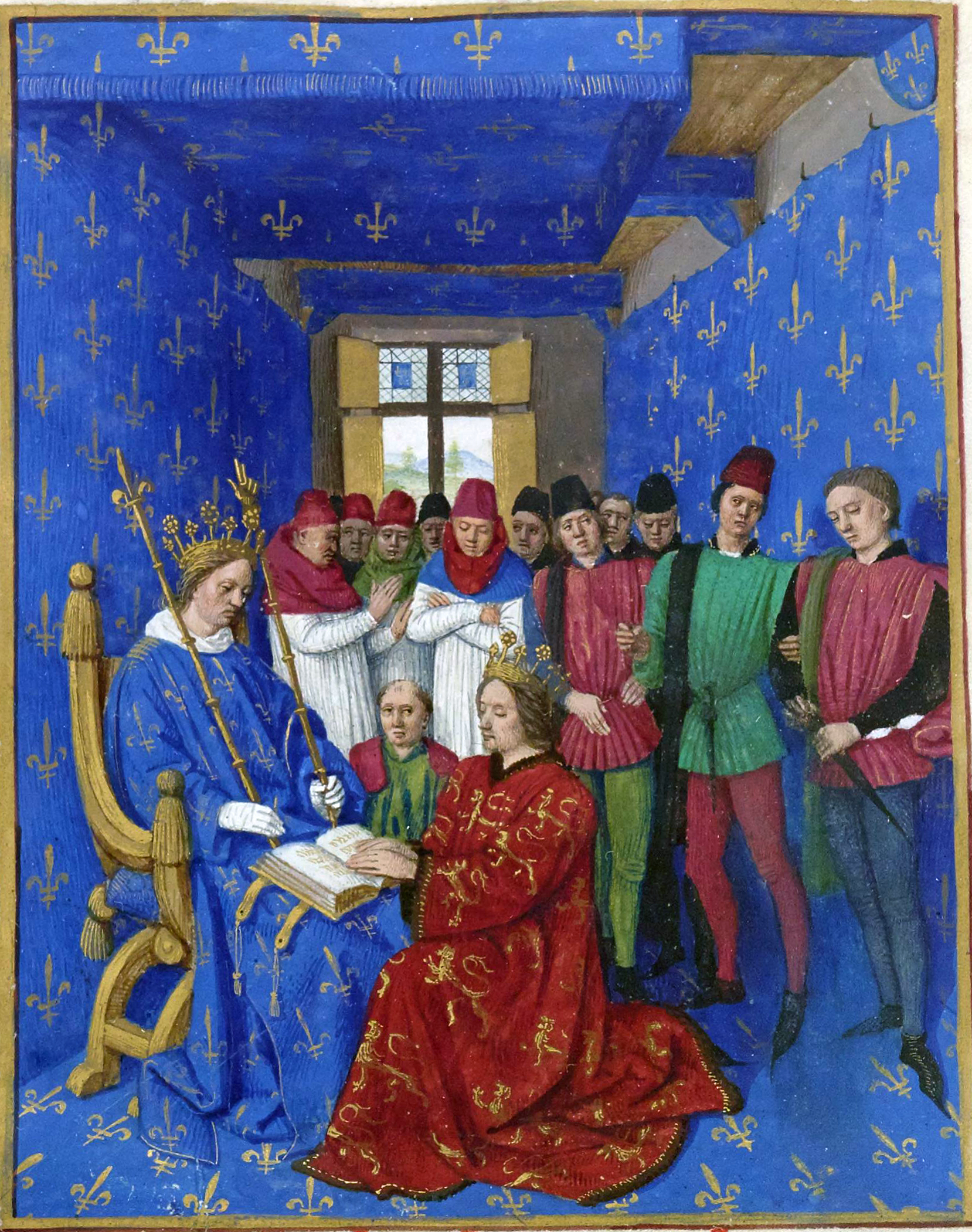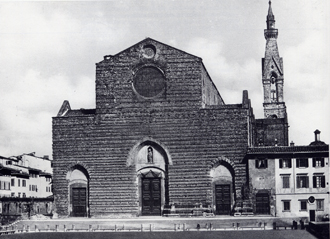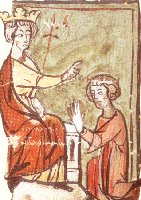|
1294
Year 1294 ( MCCXCIV) was a common year starting on Friday (link will display the full calendar) of the Julian calendar. Events Asia * February 18 – Kublai Khan dies; by this time the separation of the four khanates of the Mongol Empire (the Chagatai Khanate in Central Asia, the Golden Horde in Russia, the Ilkhanate in Persia, and the Yuan Dynasty in China) has deepened. Europe * July 5 – Following the Papal election, 1292–94, Pope Celestine V succeeds Nicholas IV, becoming the 192nd pope. * Autumn – In response to the actions of new royal administrators in north and west Wales, Madog ap Llywelyn leads a revolt against his English overlords. * December 24 – Pope Boniface VIII succeeds Pope Celestine V, becoming the 193rd pope, after Celestine V abdicates the papacy on December 13, only five months after reluctantly accepting his surprise election on July 5, wishing to return to his life as an ascetic hermit. * John Balliol, King of Scotland, decides ... [...More Info...] [...Related Items...] OR: [Wikipedia] [Google] [Baidu] |
Kublai Khan
Kublai ; Mongolian script: ; (23 September 1215 – 18 February 1294), also known by his temple name as the Emperor Shizu of Yuan and his regnal name Setsen Khan, was the founder of the Yuan dynasty of China and the fifth khagan-emperor of the Mongol Empire from 1260 to 1294, although after the division of the empire this was a nominal position. He proclaimed the empire's dynastic name "Great Yuan" in 1271, and ruled Yuan China until his death in 1294. Kublai was the second son of Tolui by his chief wife Sorghaghtani Beki, and a grandson of Genghis Khan. He was almost 12 when Genghis Khan died in 1227. He had succeeded his older brother Möngke as Khagan in 1260, but had to defeat his younger brother Ariq Böke in the Toluid Civil War lasting until 1264. This episode marked the beginning of the fragmentation of the empire. Kublai's real power was limited to the Yuan Empire, even though as Khagan he still had influence in the Ilkhanate and, to a significantly lesser deg ... [...More Info...] [...Related Items...] OR: [Wikipedia] [Google] [Baidu] |
Pope Boniface VIII
Pope Boniface VIII ( la, Bonifatius PP. VIII; born Benedetto Caetani, c. 1230 – 11 October 1303) was the head of the Catholic Church and ruler of the Papal States from 24 December 1294 to his death in 1303. The Caetani family was of baronial origin, with connections to the papacy. He succeeded Pope Celestine V, who had abdicated from the papal throne. Boniface spent his early career abroad in diplomatic roles. Boniface VIII put forward some of the strongest claims of any pope to temporal as well as spiritual power. He involved himself often with foreign affairs, including in France, Sicily, Italy and the First War of Scottish Independence. These views, and his chronic intervention in "temporal" affairs, led to many bitter quarrels with Albert I of Germany, Philip IV of France, and Dante Alighieri, who placed the pope in the Eighth Circle of Hell in his ''Divine Comedy'', among the simoniacs. Boniface systematized canon law by collecting it in a new volume, the ''Liber S ... [...More Info...] [...Related Items...] OR: [Wikipedia] [Google] [Baidu] |
Madog Ap Llywelyn
Madog ap Llywelyn (died after 1312) was the leader of the Welsh revolt of 1294–95 against English rule in Wales and proclaimed "Prince of Wales". The revolt was surpassed in longevity only by the revolt of Owain Glyndŵr in the 15th century. Madog belonged to a junior branch of the House of Aberffraw and was a distant relation of Llywelyn ap Gruffudd, the last recognised native Prince of Wales. Lineage Madog was the son of Llywelyn ap Maredudd, the last vassal Lord of Meirionydd who had been deprived of his patrimony in 1256 for opposing the future Prince of Wales, Llywelyn ap Gruffudd, at the Battle of Bryn Derwin. Llywelyn ap Maredudd had gone into exile in England where he received a pension from the English crown, until June 1262 when he reconciled with Llywelyn ap Gruffudd. He died in a skirmish fighting for the Welsh in April 1263. His eldest son, Madog, who may have been born in exile, is known to have received substantial monetary gifts from King Edward I of Englan ... [...More Info...] [...Related Items...] OR: [Wikipedia] [Google] [Baidu] |
Pope Celestine V
Pope Celestine V ( la, Caelestinus V; 1215 – 19 May 1296), born Pietro Angelerio (according to some sources ''Angelario'', ''Angelieri'', ''Angelliero'', or ''Angeleri''), also known as Pietro da Morrone, Peter of Morrone, and Peter Celestine, was head of the Catholic Church and ruler of the Papal States for five months from 5 July to 13 December 1294, when he resigned. He was also a monk and hermit who founded the order of the Celestines as a branch of the Benedictine order. He was elected pope in the Catholic Church's last non-conclave papal election, ending a two-year impasse. Among the few edicts of his to remain in force was the confirmation of the right of the pope to resign; nearly all of his other official acts were annulled by his successor, Boniface VIII. On 13 December 1294, a week after issuing the decree, Celestine resigned, stating his desire to return to his humble, pre-papal life. He was subsequently imprisoned by Boniface in the castle of Fumone in the ... [...More Info...] [...Related Items...] OR: [Wikipedia] [Google] [Baidu] |
Philip IV Of France
Philip IV (April–June 1268 – 29 November 1314), called Philip the Fair (french: Philippe le Bel), was King of France from 1285 to 1314. By virtue of his marriage with Joan I of Navarre, he was also King of Navarre as Philip I from 1284 to 1305, as well as Count of Champagne. Although Philip was known to be handsome, hence the epithet ''le Bel'', his rigid, autocratic, imposing, and inflexible personality gained him (from friend and foe alike) other nicknames, such as the Iron King (french: le Roi de fer, link=no). His fierce opponent Bernard Saisset, bishop of Pamiers, said of him: "He is neither man nor beast. He is a statue." Philip, seeking to reduce the wealth and power of the nobility and clergy, relied instead on skillful civil servants, such as Guillaume de Nogaret and Enguerrand de Marigny, to govern the kingdom. The king, who sought an uncontested monarchy, compelled his upstart vassals by wars and restricted their feudal privileges, paving the way fo ... [...More Info...] [...Related Items...] OR: [Wikipedia] [Google] [Baidu] |
Edward I Of England
Edward I (17/18 June 1239 – 7 July 1307), also known as Edward Longshanks and the Hammer of the Scots, was King of England and Lord of Ireland from 1272 to 1307. Concurrently, he ruled the duchies of Aquitaine and Gascony as a vassal of the French king. Before his accession to the throne, he was commonly referred to as the Lord Edward. The eldest son of Henry III, Edward was involved from an early age in the political intrigues of his father's reign, which included a rebellion by the English barons. In 1259, he briefly sided with a baronial reform movement, supporting the Provisions of Oxford. After reconciliation with his father, however, he remained loyal throughout the subsequent armed conflict, known as the Second Barons' War. After the Battle of Lewes, Edward was held hostage by the rebellious barons, but escaped after a few months and defeated the baronial leader Simon de Montfort at the Battle of Evesham in 1265. Within two years the rebellion was ex ... [...More Info...] [...Related Items...] OR: [Wikipedia] [Google] [Baidu] |
Yuan Dynasty
The Yuan dynasty (), officially the Great Yuan (; xng, , , literally "Great Yuan State"), was a Mongol-led imperial dynasty of China and a successor state to the Mongol Empire after its division. It was established by Kublai, the fifth khagan-emperor of the Mongol Empire from the Borjigin clan, and lasted from 1271 to 1368. In orthodox Chinese historiography, the Yuan dynasty followed the Song dynasty and preceded the Ming dynasty. Although Genghis Khan had been enthroned with the Han-style title of Emperor in 1206 and the Mongol Empire had ruled territories including modern-day northern China for decades, it was not until 1271 that Kublai Khan officially proclaimed the dynasty in the traditional Han style, and the conquest was not complete until 1279 when the Southern Song dynasty was defeated in the Battle of Yamen. His realm was, by this point, isolated from the other Mongol-led khanates and controlled most of modern-day China and its surrounding areas, inc ... [...More Info...] [...Related Items...] OR: [Wikipedia] [Google] [Baidu] |
Santa Croce, Florence
The (Italian for 'Basilica of the Holy Cross') is the principal Franciscan church in Florence, Italy, and a minor basilica of the Roman Catholic Church. It is situated on the Piazza di Santa Croce, about 800 meters south-east of the Duomo. The site, when first chosen, was in marshland outside the city walls. It is the burial place of some of the most illustrious Italians, such as Michelangelo, Galileo, Machiavelli, the poet Foscolo, the philosopher Gentile and the composer Rossini, thus it is known also as the Temple of the Italian Glories (). Building The basilica is the largest Franciscan church in the world. Its most notable features are its sixteen chapels, many of them decorated with frescoes by Giotto and his pupils, and its tombs and cenotaphs. Legend says that Santa Croce was founded by St Francis himself. The construction of the current church, to replace an older building, was begun on 12 May 1294, possibly by Arnolfo di Cambio, and paid for by some of the city's ... [...More Info...] [...Related Items...] OR: [Wikipedia] [Google] [Baidu] |
Scottish Wars Of Independence
The Wars of Scottish Independence were a series of military campaigns fought between the Kingdom of Scotland and the Kingdom of England in the late 13th and early 14th centuries. The First War (1296–1328) began with the English invasion of Scotland in 1296, and ended with the signing of the Treaty of Edinburgh–Northampton in 1328. The Second War (1332–1357) began with the English-supported invasion by Edward Balliol and the 'Disinherited' in 1332, and ended in 1357 with the signing of the Treaty of Berwick. The wars were part of a great crisis for Scotland and the period became one of the most defining times in its history. At the end of both wars, Scotland retained its status as an independent state. The wars were important for other reasons, such as the emergence of the longbow as a key weapon in medieval warfare. The First War of Independence: 1296–1328 Background King Alexander III of Scotland died in 1286, leaving his three-year-old granddaughter Margaret, ... [...More Info...] [...Related Items...] OR: [Wikipedia] [Google] [Baidu] |
Auld Alliance
The Auld Alliance ( Scots for "Old Alliance"; ; ) is an alliance made in 1295 between the kingdoms of Scotland and France against England. The Scots word ''auld'', meaning ''old'', has become a partly affectionate term for the long-lasting association between the two countries. Although the alliance was never formally revoked, it is considered by some to have ended with the signing of the Treaty of Edinburgh in 1560. The alliance played a significant role in the relations among Scotland, France and England. The alliance was renewed by all the French and Scottish monarchs of that period except Louis XI. By the late 14th century, the renewal occurred regardless of whether either kingdom was at war with England at the time.BONNER, ELIZABETH. “Scotland’s ‘Auld Alliance’ with France, 1295–1560.” ''History'', vol. 84, no. 273, Wiley, 1999, pp. 5–30, . The alliance began with the treaty signed by John Balliol and Philip IV of France in 1295 against Edward I of Englan ... [...More Info...] [...Related Items...] OR: [Wikipedia] [Google] [Baidu] |
Arnolfo Di Cambio
Arnolfo di Cambio (c. 1240 – 1300/1310) was an Italian architect and sculptor. He designed Florence Cathedral and the sixth city wall around Florence (1284–1333), while his most important surviving work as a sculptor is the tomb of Cardinal de Braye in S. Domenico, Orvieto. Biography Arnolfo was born in Colle Val d'Elsa, Tuscany. He was Nicola Pisano’s chief assistant on the marble Siena Cathedral Pulpit for the Duomo in Siena Cathedral (1265–1268), but he soon began to work independently on an important tomb sculpture. In 1266–1267 he worked in Rome for King Charles I of Anjou, portraying him in the famous statue housed in the Campidoglio. Around 1282 he finished the monument to Cardinal Guillaume de Braye in the church of San Domenico in Orvieto, including an enthroned Madonna (a ''Maestà'') for which he took as a model an ancient Roman statue of the goddess Abundantia; the Madonna's tiara and jewels reproduce antique models. In Rome Arnolfo had seen the Cosm ... [...More Info...] [...Related Items...] OR: [Wikipedia] [Google] [Baidu] |
Florence Cathedral
Florence Cathedral, formally the (; in English Cathedral of Saint Mary of the Flower), is the cathedral of Florence, Italy ( it, Duomo di Firenze). It was begun in 1296 in the Gothic style to a design of Arnolfo di Cambio and was structurally completed by 1436, with the dome engineered by Filippo Brunelleschi. The exterior of the basilica is faced with polychrome marble panels in various shades of green and pink, bordered by white, and has an elaborate 19th-century Gothic Revival façade by Emilio De Fabris. The cathedral complex, in Piazza del Duomo, includes the Baptistery and Giotto's Campanile. These three buildings are part of the UNESCO World Heritage Site covering the historic centre of Florence and are a major tourist attraction of Tuscany. The basilica is one of Italy's largest churches, and until the development of new structural materials in the modern era, the dome was the largest in the world. It remains the largest brick dome ever constructed. The cathedral is ... [...More Info...] [...Related Items...] OR: [Wikipedia] [Google] [Baidu] |











